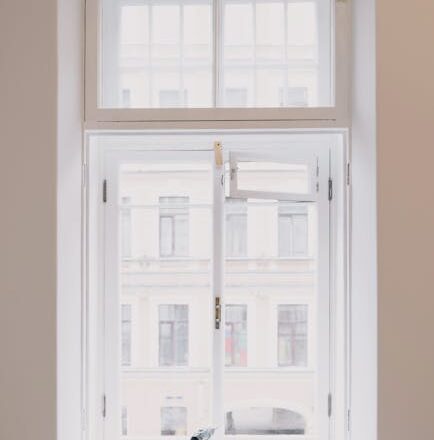
How to Install Energy-Efficient Windows: Step-by-Step Instructions
Installing energy-efficient windows can reduce your heating and cooling bills by up to 15%, but did you know that improper installation can wipe out these savings entirely? With over 85% of homeowners replacing windows for energy efficiency, mastering the installation process is crucial for maximizing your investment.
Why Energy-Efficient Window Installation Matters
Fun Fact: The average home loses 25-30% of its heating and cooling energy through windows. Properly installed energy-efficient windows can prevent this waste while potentially increasing your home's value by up to 70% of the project cost.
What You'll Need Before Starting
- Energy Star certified windows (U-factor below 0.30 for most climates)
- Measuring tape and level
- Pry bar and hammer
- Exterior-grade caulk and sealant
- Insulation foam
- Shims for adjustments
- Safety equipment (gloves, safety glasses)
Step-by-Step Installation Process
Step 1: Measure Precisely (Accuracy is Everything)
Amazing Fact: Even a 1/8-inch gap around a window can reduce energy efficiency by up to 40%. Measure your existing window opening three times: width at top, middle, and bottom; height at left, center, and right. Order windows 1/2 inch smaller than your measurements to accommodate insulation.
Step 2: Remove Existing Windows Safely
Carefully remove interior trim using a pry bar. Disconnect any window-related wiring (alarms, sensors). Remove screws or hardware securing the old window frame. Historical Note: Windows installed before 1978 may contain lead paint, requiring professional handling in some jurisdictions.
Step 3: Prepare the Opening
Clean the opening thoroughly, removing old caulk, debris, and damaged materials. Check that the rough opening is square and level. Energy Secret: A window that's perfectly sized but installed in an uneven opening will leak air and reduce efficiency by 25%.
Step 4: Test-Fit Your New Window
Place the new window in the opening without securing it. Check for proper fit and operation. The window should sit level and allow 1/4 inch clearance on all sides for insulation.
Step 5: Install Shims for Perfect Alignment
Innovation Highlight: Modern energy-efficient windows often include built-in nailing fins, but using shims ensures proper alignment and prevents frame warping. Place shims every 6-8 inches along the frame sides and bottom.
Step 6: Secure the Window Frame
Drive screws through the nailing fin or frame every 6 inches, ensuring the window remains square and level. Don't overtighten, as this can distort the frame and compromise the seal.
Step 7: Insulate and Seal Completely
Apply continuous bead of exterior-grade caulk around the exterior perimeter. Fill gaps between the window frame and rough opening with low-expansion foam insulation. Professional Tip: Expanding foam should be applied in 2-inch deep layers, allowing each layer to cure before adding more.
Step 8: Finish Interior and Exterior Trim
Install interior trim according to manufacturer specifications. Apply exterior trim or siding as needed to cover gaps and provide weather protection.
Pro Tips You Won't Find Everywhere
Did You Know? Installing windows during mild weather (50-70°F) ensures optimal caulk and sealant performance. Extreme temperatures can cause materials to expand or contract, compromising the seal.
Industry Secret: Triple-pane windows aren't always better than double-pane in moderate climates. The added weight and cost may not justify the marginal efficiency gains unless you live in extreme temperatures.
Common Mistakes That Cost You Money
- Oversizing the rough opening - Creates gaps that require excessive insulation
- Neglecting to check for square - Forces window frames to twist and bow
- Using interior caulk exterior - Interior sealants break down quickly in UV light
- Insulating before securing - Can push the window out of alignment
Maximizing Your Energy Savings
Economic Reality: Properly installed energy-efficient windows typically pay for themselves in 5-10 years through reduced energy costs, while lasting 20-25 years. In some markets, they can recoup 70-80% of their cost at resale.
Climate-Specific Facts:
- Cold climates: Focus on low U-values (below 0.25)
- Hot climates: Prioritize low Solar Heat Gain Coefficient (SHGC below 0.25)
- Mixed climates: Look for balanced ratings in both categories
Final Checks for Maximum Efficiency
After installation, test your window's seal by running your hand around the frame during both heating and cooling seasons. There should be no air drafts. Energy Fact: A properly installed energy-efficient window should eliminate drafts entirely, unlike older windows that often require weatherstripping replacement every few years.
When to Call Professionals
Consider professional installation if you're working with historic windows, complex architectural features, or if you're unsure about electrical connections. Interesting Statistic: Professional installations are 30% more likely to maintain window warranties and achieve optimal energy performance ratings.
Bottom Line: Energy-efficient window installation is a DIY project that can save thousands in energy costs, but requires precision and proper technique. Take your time with measurements and sealing – these steps determine whether your new windows will deliver promised energy savings or become an expensive disappointment.
By following these steps and understanding the science behind energy efficiency, you'll enjoy lower utility bills, increased comfort, and enhanced home value for decades to come. Remember: the difference between an average and excellent window installation often comes down to attention to the small details most people overlook.